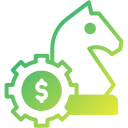Understanding Central Bank Policies and Your Finances
Today’s chosen theme: “Understanding Central Bank Policies and Your Finances.” Welcome to a clear, friendly guide that links interest rates, inflation, and policy decisions to your savings, debts, investments, and everyday choices. Read on, ask questions, and subscribe for practical insights you can actually use.

Why Central Bank Decisions Matter to Your Wallet
Central banks set policy rates and guide expectations; banks adjust lending and savings; consumers change borrowing and spending; prices shift. Following that chain helps you anticipate costs, improve timing for big purchases, and avoid surprises. Share how rate changes have shown up in your bills.
When rates jumped, Maya’s adjustable mortgage reset higher within months, squeezing her budget. She rebalanced expenses, refinanced to a fixed rate, and set alerts for policy meetings. Her experience shows how awareness plus timely action can protect cash flow during volatile cycles.
Policy steers incentives, but your reactions—spending, saving, refinancing—complete the loop. Building a buffer, comparing loan offers, and tracking official guidance let you navigate uncertainty. Comment with your approach to bolstering savings or reducing debt when policy signals turn hawkish or dovish.

Interest Rates: The Bridge from Policy to Daily Costs
When policy rates rise, banks often lift deposit yields, though with a lag. Shop around; online banks may respond faster. Laddering CDs can capture attractive rates without locking you in entirely. Tell us which savings strategies have helped you benefit from rising yields.
Interest Rates: The Bridge from Policy to Daily Costs
Variable-rate debt can get expensive quickly during tightening cycles. Prioritize high-interest balances, and consider fixed-rate consolidation if it lowers total cost. Automate extra payments when possible. Share your playbook for tackling interest-heavy debts when rates climb unexpectedly.
Interest Rates: The Bridge from Policy to Daily Costs
Adjustable-rate mortgages can look cheaper upfront but reset with policy shifts. Fixed rates provide stability at a known cost. Evaluate break-even points for refinancing and your time horizon. Have you refinanced after a policy pivot? Describe what tipped your decision.
Inflation Targeting and Your Cost of Living
Decoding CPI, Core Inflation, and Expectations
Headline CPI measures broad price changes; core strips out volatile items like food and energy. Expectations shape future prices as businesses and households plan. Tracking these helps you anticipate shifts. Which inflation indicators do you check regularly? Share your favorite sources.


Wages, Contracts, and Negotiations
In higher inflation, negotiate pay with data: show sector trends and productivity contributions. Consider cost-of-living adjustments when possible. Even small raises compound over time. Tell us how inflation has shaped your recent negotiations or side income decisions and what worked best.
Quantitative Easing, Tightening, and Market Ripples
What QE Does in Plain Language
Quantitative easing increases central bank purchases of bonds, lowering long-term yields and encouraging investment. It can lift asset prices and cheapen financing. If you invest, watch the maturity mix of purchases. What QE-era trends did you notice in your market watchlist or mortgage quotes?
QT and the Return of Scarcity
Quantitative tightening reduces central bank bond holdings, often nudging yields higher and liquidity lower. Markets may get choppier. Revisit risk tolerance, set rebalancing rules, and maintain cash for opportunities. How do you prepare your portfolio when liquidity begins to drain?
A Balanced Playbook for Uncertain Markets
Diversify across assets and time, not just sectors. Automate contributions, rebalance periodically, and avoid chasing headlines. Build an emergency fund to reduce forced selling. Share your rules-of-thumb for staying invested while policy and liquidity conditions evolve month by month.
Exchange Rates, Global Policy, and Your Everyday Choices
A stronger home currency can make trips and international e-commerce cheaper; a weaker one does the opposite. Compare total costs after fees and conversion rates. Consider spending caps in foreign currencies. How have exchange swings changed your travel plans or online shopping habits?
When your currency weakens, imported goods can get pricier, feeding local inflation. Watch categories like electronics, apparel, and fuel. Adjust purchasing windows and consider durable alternatives. Tell us which price changes you’ve noticed most when exchange rates moved sharply.
Foreign assets add diversification but introduce currency risk. Some use hedged funds; others accept volatility for potential returns. Align choices with time horizon and tolerance. What has been your experience with international holdings during big policy divergences among major central banks?
Reading Policy Statements and Building Your Action Plan

Scan for rate decision, vote split, inflation outlook, and guidance on future moves. Compare to market expectations to gauge surprises. Note dates of upcoming meetings. Which parts of policy statements do you track, and what resources help you understand the jargon quickly?
